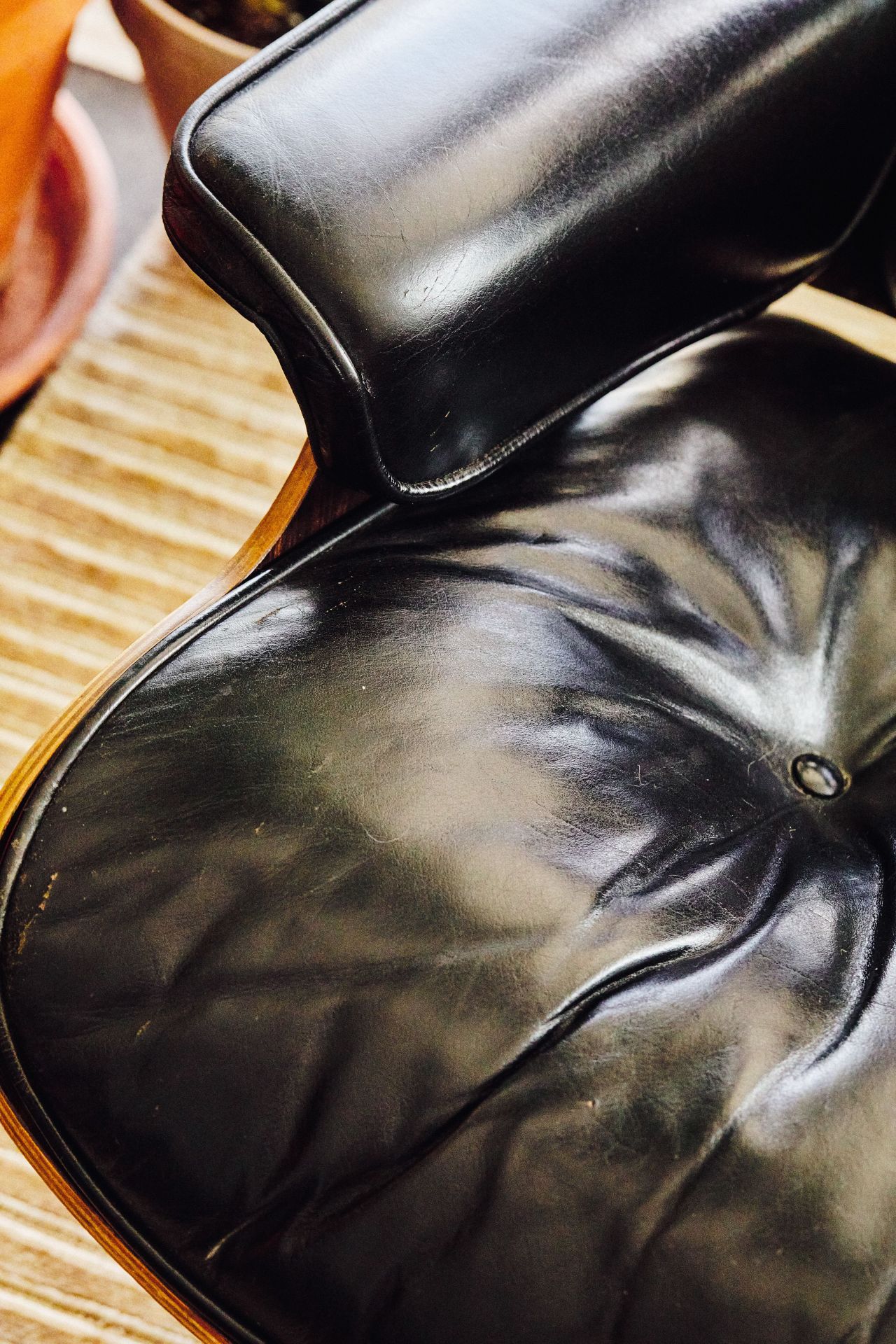One of the great double-edged swords of pandemic life — early, middle and latter stages included — is the amount of time that needs filling. Over the past 18 months, I taught myself how to play the harmonica, tried to read Dune, made pasta from scratch and binged more Survivor seasons than I care to disclose. Mostly, though, I sat in a chair, staring at my phone, while existential dread cooked me from the inside. And though I found it all too easy to whine about the general and specific states of things, there was one specific thing that managed to escape my ire: the chair I was sitting in, an Eames Lounge Chair & Ottoman made and purchased in 1970.

I know the chair is that old because the manufacturer, Herman Miller (now MillerKnoll after the company acquired its equally iconic nemesis), keeps an incredible archive; plus, websites like Eames.com and MyEamesLoungeChairandOttoman.com exist and say so. Also, it once belonged to my grandfather.
I knew Charles Lathem, the son of a railroad blacksmith in Birmingham, Alabama, for the last 17 years of his life. My sister dubbed him Big Daddy, not in reference to the 1999 Adam Sandler film, but because he — like his father before him — was big. Before he lost a large percentage of his stomach fending off esophageal cancer, he was a 6-foot-3, 200-plus-pound grandpa with a gleaming bald head and bushy white beard. He was a hunter, a fisherman, a carpenter and really every other cliché of that kind of do-it-all masculinity. His skin was leathery and dark brown on account of his being outside so much. When I knew him, he was enamored with cowboy lore and had the full collection of leather-bound Louis L’Amour novellas to prove it.
I discovered the Eames lounger shortly after graduating college. It was hidden away in a studio above the garage at my grandparent’s place, which is tucked away about a mile up a gravel round in Dawsonville, Georgia. It’s not a big house, but the slow drive through the woods makes it feel important. I knew the provenance of the chair, or at least the basics — Charles and Ray Eames, mid-century modern, weirdly expensive nowadays. I did not, however, know why it was there. My grandparents’ house was more rustic Southern chalet than anything. The Eames’ slightly askew lounger, despite being one of the most famous pieces of furniture in the world, simply did not belong.
I’m somewhat ashamed to admit that stubbing my toe on an old leather chair triggered my own mortal reckoning. Asinine as it sounds, the chair served as a kind of link between then and now — proof that things happened before I gained sentience.
 Henry Phillips
Henry PhillipsIn the years following my discovery of the chair, I got to know about the before. It’s clear my grandparents did not fit the Alabaman caricature, a myth based on lazy thinking: my grandfather was a photographer, artist and architect; and my grandmother was a post-op nutritionist as well as the first woman in her family to earn a college degree. The pair met at Alabama Polytech (renamed to Auburn University while they were in school). Before they lived in the chalet in the woods (which my grandfather blueprinted himself), they lived in Vinings, Georgia, a hip Atlanta neighborhood that’s very much a part of the city’s creative milieu. I know now that their first house was modern and full of Eames pieces and other mid-century icons, like George Nelson’s Bubble Lamps and Florence Knoll’s tufted sofa. There were Cubist and Fauvist paintings on the walls and massive palm plants on the floor. If they weren’t lost to time, grainy photos of their home would make for excellent Instagram fodder.

